On Friday, Riese compiled a list of all 65 lesbian and bisexual TV characters who have been victims of the Bury Your Gays trope. Every single character we could think of. SIXTY-FIVE of them. Thanks to contributions from our readers (and Riese’s willingness to spend a sleepless weekend filling in the blanks), that list now includes 133 lesbian/bisexual characters. It doubled in size in one weekend.
You asked us to complement that list with one like this that counts down happy endings. Not just “the show got cancelled and the gay lady was still alive” endings, but truly triumphant story resolutions. Lesbian and bisexual characters who received fitting and worthy send-offs that were comparable to the ones the show’s straight characters received.
Making this list was a mixed bag of emotions. It was uplifting to relive this handful of stories, but it was also a reminder that these beacons of hope only make up a fraction of the overall lesbian and bisexual TV canon. What’s particularly striking is that most of these happy endings involve couples — while 29 characters are represented, only 15 total shows made the list. (That’s 15 shows in the whole entire history of television.) It’s also important to note that happy endings and death aren’t the only options for lesbian and bisexual TV characters. We’ll be taking a closer look at this in the next few days as Riese and I work through a comprehensive statistical analysis of the totality of lesbian/bi TV, but according to our research so far, around a third of lesbian/bi characters are written off, disappeared, or not important enough to the show to be gifted a farewell narrative.
Here are 29 TV characters who actually did get their final moments in the sun.
Ellen, Ellen (1994-1998)
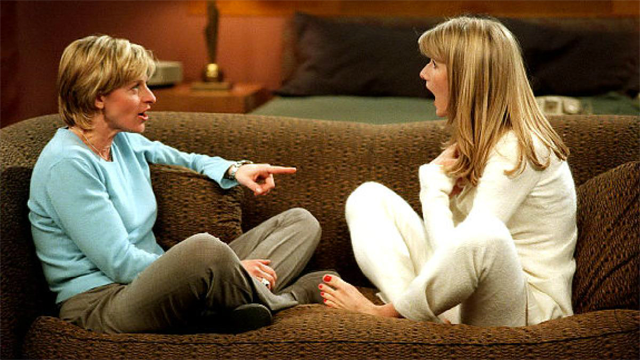
Ellen‘s season five series finale drew ire from critics because it (rightly) predicted a future world in which the sitcom would be heralded as a groundbreaking, watershed series. The finale called back to I Love Lucy, and the fact that Lucy couldn’t say the word “pregnant” on-air, same as Ellen hadn’t been able to say “lesbian” for so long. It created a ’50s-style gameshow called Who’s the Commie, comparing McCarthyism to the family values rhetoric of the ’80s and ’90s. It also drew comparisons to civil rights fights in the ’60s and ’70s. Critics called it “self-important” and “pushing the gay agenda.” My all-time favorite review of the finale said: “She has done more harm than good. Ellen has left the TV a less desirable place for gays.” In fact, everything Ellen hoped would be true about her show 20 years later is true. She’s now the queen of her own creative empire and she hangs out every American’s living room. She did more for gay people on TV than anyone in history, just as her swaggering season finale predicted she would.
Mel and Lindsay, Queer as Folk (2000-2005)

Mel and Lindsay weren’t exactly a paragon of domestic bliss, but the Queer as Folk finale saw them putting aside their differences and deciding to give it another go. What’s an affair or two, an angry word spoken here or there, an occasional dish thrown at the wall compared to one of your lesbian best friends getting blown up in a hate crime bombing at a gay and lesbian convention. Dusty’s death really challenged them to sort out their priorities. Mel and Lindsay were the only two main female characters on a show made for and aimed at gay men; they could easily have been part of the body count. But they lived and decided to try to love again.
Helen and Nikki, Bad Girls (1999-2001)
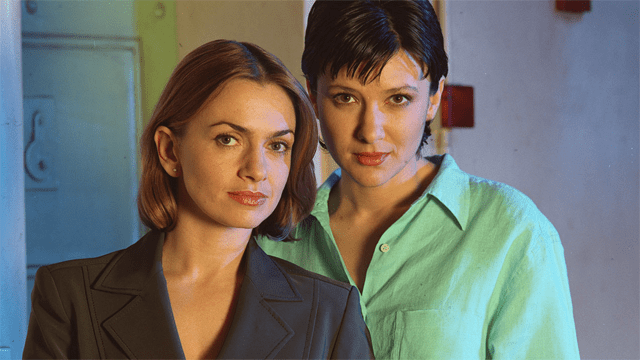
Helen and Nikki’s relationship should have been a disaster that ended in heartache. A lesbian in jail for killing a man who tried to rape her girlfriend falls in love with the straight governing governor. But there’s was a fairytale romance for the ages. It remains, to this day, one of the most satisfying queer storylines in TV history, and it ends with Nikki getting released from jail (after her crime is ruled self-defense) and chasing Helen down in the street, where Helen says to her: “[My boyfriend] Thomas is gorgeous, and he’s everything you’d want in a man. But I want a woman.” The last scene of season three, their last appearance on-screen, fades to black as they make out against a storefront in the middle of the day on a crowded street. Free to just be with each other. Free to be.
Katie and Jessie, Once and Again (1999-2002)

Katie and Jessie confessed their feelings for each other in the most authentic queer coming of age moment TV had displayed up until that point. 15-year-old Katie tells Jessie she is in love with her in a note (of course), and although Jessie reciprocates her best friend’s feelings (of course), she’s terrified to do anything about it. After a pep talk from her step-sister (“God, just go for it! No one will care!”) Jessie decides to tell Katie that she feels romantical toward her too, with a couple of kisses right on the mouth. Almost immediately afterward, the series was cancelled. I’m counting this one because it was the first ever multi-episode relationship between two teenage girls, and it ended happily after a season of will-they/won’t-they angst. They will! And they did!
Willow and Kennedy, Buffy the Vampire Slayer (1997-2003)
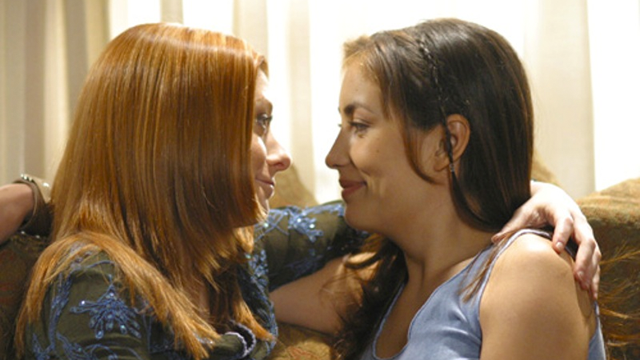
Despite the fact that Entertainment Weekly has deemed Kennedy one of the 21 most annoying TV characters ever, and despite the fact that she is nearly universally found wanting by queer women, and despite the fact that her presence feels like an inadequate apology for the decision to kill Tara, Kennedy was standing in the end, right alongside Willow. Sure all their friends were dead, but they still had each other. They saved the world and also became the first lesbian couple to have overt sex on primetime network TV.
Kerry Weaver, ER (1994-2009)
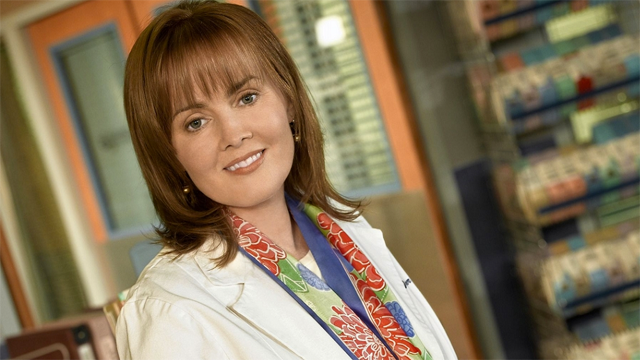
Nobody who worked in the ER on ER had it easy. Everyone saw a loved one come rushing through the doors on a gurney at one time or another, and Kerry Weaver was no exception. The love of her life died right there on the table. And then she got demoted from Chief of Staff to ER Attending Physician. But nothing could keep Kerry down! When a medical documentary crew arrived with a lesbian producer in tow, Kerry fell in love with Courtney, their producer. And Courtney fell in love right back. Dr. Weaver decided she’d had enough drama to last a lifetime, so when Courtney asked her to leave her job and follow her to Florida for a life of sunshine and domestic bliss, she pounced on the opportunity. She got the girl and landed a job being a TV doctor. Kerry Weaver literally stole the show!
Spencer and Ashley, South of Nowhere (2005-2008)

Spencer and Ashley were a bright light in a dark time for queer women on TV. It was The L Word or nothing back in those days. They engaged in a constant push-pull for several seasons, always loving each other but hardly ever being on the same page about it. In the end, though, Spencer is out and proud (and her formerly homophobic mom is finally proud too), and Ashley has worked through her commitment issues, so they move into a loft in Los Angeles and start their life together. (SoN even offered up a post-finale webisode to prove to viewers that Spencer and Ashley made it.)
Kima Greggs, The Wire (2002-2008)
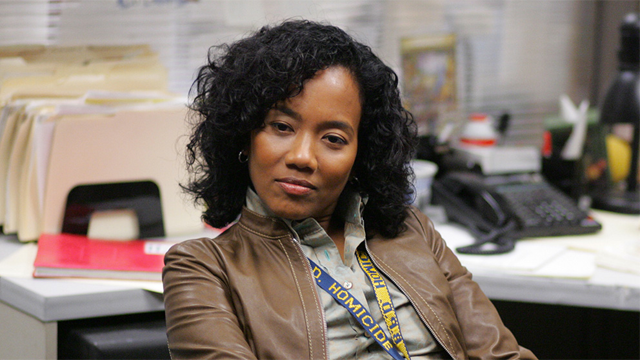
Kima’s life on The Wire wasn’t easy, and she seemed more destined than Shane McCutcheon to blow up her relationships with awesome women, but at the end of the series — and she was one of the only characters to appear in the majority of episodes every season — she finally got partnered up with Bunk, the best detective in Baltimore besides her. The two of them rode off into the sunset together to keep fighting the good fight in complicated ways.
Bette and Tina, The L Word (2004-2009)
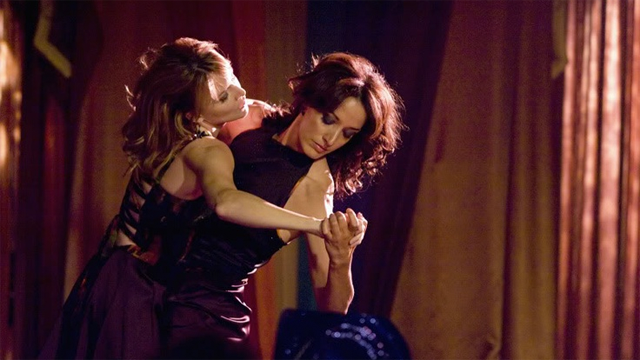
After a whole lot of lying, fucking, fighting, and cheating, Bette and Tina decided that they were right for each other (or, at the very least, that they weren’t ever going to be right for anybody else). Tina was a successful movie producer. Bette was a successful museum curator. And they were packing their bags with Angelica to get the hell out of West Hollywood. Tibette Takes Manhattan. A much better spin-off than the rejected one where Alice goes to jail for murdering Jenny.
Tasha and Alice, The L Word (2004-2009)
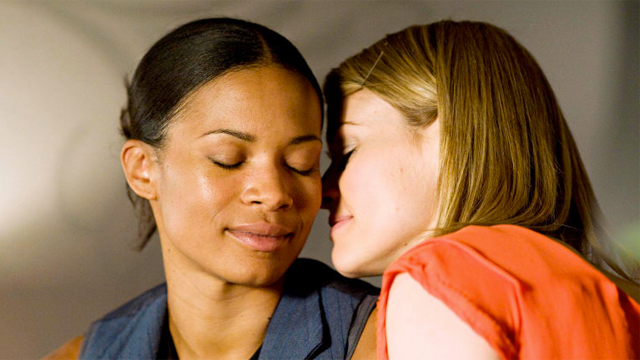
Speaking of that rejected pilot: Tasha came back to Alice right before Jenny got killed! They’d had some good times and some bad times, but the whole world was ahead of them and they were in love and there sure as sugar cubes wasn’t going to be a sequel to Lez Girls to ruin their lives.
Betty McRae, Bomb Girls (2012-2013)

I think we can all admit that the Bomb Girls movie was a mess, but it did give Betty a mostly happy ending. No one knows for sure if Kate moved into the house Betty bought for her because she finally reciprocated Betty’s big gay feelings, but everyone can say for absolute sure that Betty bought a house, a thing she’d been trying to do since the very beginning of season one! And she did it by winning a boxing match like a regular ol’ Rocky Balboa!
Korra and Asami, Legend of Korra (2012-2015)
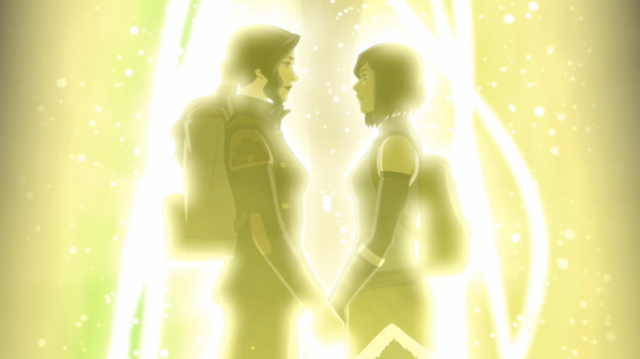
We’ve seen some pretty intense subtext between female friends in all-ages media over the last several years. Korra and Asami from Legend of Korra were up there with Marceline and Princess Bubblegum from Adventure Time when it came to passionate shippers believing their love was real. But the strangest thing happened in the Legend of Korra series finale: The writers confirmed that queer fans were right, that Korra and Asami weren’t just friends, that they were in love. They held hands and gazed lovingly into each other’s eyes and walked into the Spirit World together. It was a shocking, groundbreaking moment in queer TV history.
Brittany and Santana, Glee (2009-2015)
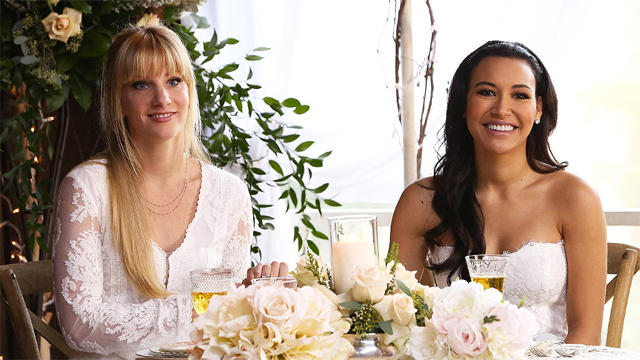
For all the missteps Glee made over the years, they got one thing right in the end: They threw a wedding and let Brittany and Santana say “I do.” It was a triumph not only for the characters inside the show, but also for but for lesbian fandom out here in the real world. This group of dedicated, resourceful women learned how to use social media to their advantage long before any other fandom, and they refused to back down in the face of mockery, criticism, and scorn from the show’s creative team. Fandom fought for every touch, every kiss, every declaration of love or identity. And they won, big time.
Cricket, Hart of Dixie (2011-2015)

After Cricket surprised everyone by coming out as a lesbian at her own (straight) wedding, Hart of Dixie didn’t exactly know how to continue to fold her into the larger narrative of the show. To their great credit, though, when it became obvious the CW wasn’t going to bring it back for a fourth season, the show made a point of spending two episodes sending everyone off on their own happy endings, including Cricket. She moved in with her girlfriend, Jayceen, and everyone was surprisingly excited for them both.
Margot and Alana, Hannibal (2013-2015)

It seemed highly unlikely that Margot and Alana were going to make it out of Hannibal alive. They’d defied one of fiction’s most terrifying serial killers multiple times, and Alana took it upon herself to humiliate him repeatedly in the final season of the show. Hannibal kept threatening them; their demise seemed inevitable. But in the series finale, the two of them and their son boarded a helicopter, flanked on all sides by armed guards, and flew the fuck away forever. Honestly, more lesbian characters should probably implement this tactic for staying alive. Armor, machine guns, and a chartered flight to a private island.
Bo and Lauren, Lost Girl (2010-2015)
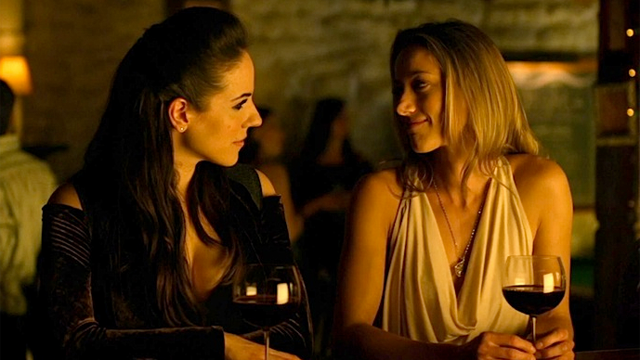
Either one of them could have died. They both could have died! They could have decided not to try again, that they were doomed, that there was no way to really forgive and forget everything they put each other through. But Bo and Lauren’s love was too strong; not even literal Hades could keep them apart. After five seasons and a love triangle that could have easily tipped the other way, Bo and Lauren chose each other. For better or for worse. In hellshoes or in leather. For so long as they both shall live.







